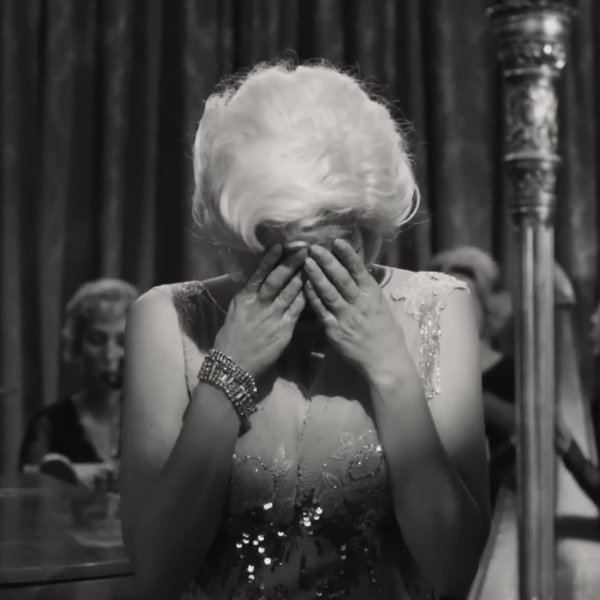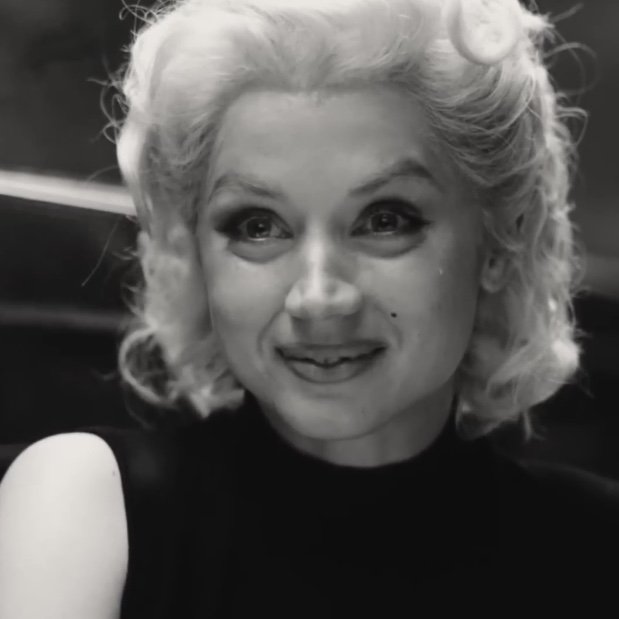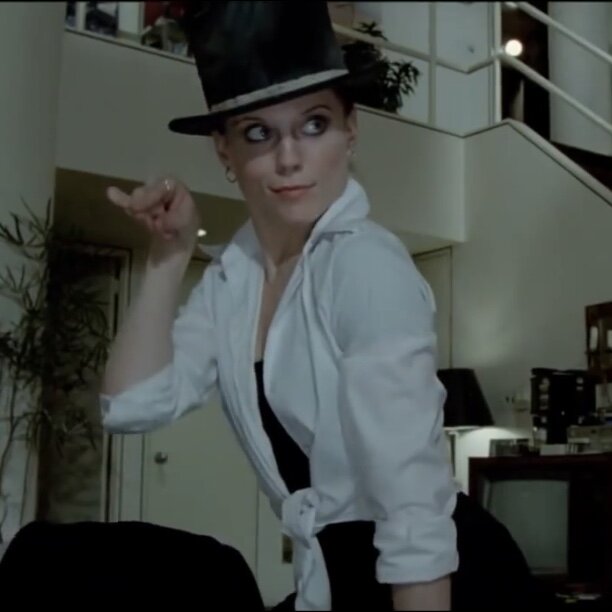Platinum Portrayal: Ana de Armas’ Golden Performance in Blonde
Disclaimer: Please note that this article about the film, Blonde, features content related to mental and emotional trauma, and other similar themes, that may be triggering for some. Reader discretion is advised.
While many reviews of Andrew Dominik’s Blonde, the 2022 film based on Joyce Carol Oates’ historical fiction novel of the same name, were rather scathing, it’s Ana de Armas’ portrayals of Norma Jeane Mortenson and Marilyn Monroe that serve as the main reason to muster up the courage to try and commit to watching the often disturbing and disjointed three-hour film.
Oddly enough, through no fault of her own, it’s de Armas’ performance that’s representative of how disjointed the film really is: simply put, she’s far better than the material that surrounds her. Here are at least five scenes from Blonde where de Armas goes from good to great, displaying a wholehearted commitment to portraying a fictional incarnation of a famous figure, as well as the daunting, almost insurmountable, challenge of playing the most famous female icon in Hollywood history.
5. Calling the Shots: After talking to her agent by phone about the glaring salary inequity between her and a much-higher-paid Jane Russell for 1953’s Gentlemen Prefer Blondes, Norma Jeane calmly questions: “And I’m playing the blonde, in Gentlemen Prefer Blondes? That’s an insult.” She remains polite, even announcing: “I’m gonna hang up now,” but a second later her agent calls her Marilyn, to which Norma Jeane angrily replies: “F*** Marilyn, she’s not here!” and slams down the receiver. de Armas gives Norma Jeane a look of stunned disbelief at what has transpired, but soon proudly smiles at her newfound confidence.
4. Pink Diamonds: de Armas is Monroe’s Lorelei Lee doppelgänger in Blonde’s recreation of the classic “Diamonds are a Girl’s Best Friend” musical number from Gentlemen Prefer Blondes. With only two days to learn the choreography, de Armas captured Monroe’s hand gestures, shoulder shrugs and slinky movements on the narrow staircase. de Armas did 21 takes, with Dominik using the 21st in the final film.
3. Audition Ambition: In the scene where a nervous Norma Jeane auditions for the role of Nell for 1952’s Don’t Bother to Knock, it’s her opportunity to show the (uninterested) male powers that be how connected she is to the character, to the material and to what it represents. Norma Jeane delivers a solid audition (complete with de Armas dropping a single tear down her left cheek), but still asks to do the reading again. de Armas conveys Norma Jeane’s longing for connection, to be heard, not just seen.
2. A Method to the Sadness: At an acting workshop, an in-depth, Method-style exercise eventually sends Norma Jeane down to the floor in hysterics. As a disheveled Norma Jeane tries to regain her composure, as if she’s been jolted awake from a nightmare, the teacher asks: “What were you thinking of?” To which she replies: “I wasn’t thinking.” She quickly tries to gather her thoughts: “Um, maybe… I was remembering?” This is one of de Armas’ strongest scenes, for its display of raw emotion offset soon thereafter by a subtle, shy smile and a loud sniffle during Norma Jeane’s responses, showing just how committed Norma Jeane was to exploring her acting craft, even after an intense reaction.
1. Mother and Child Reunion: Early in the film, a seven-year-old Norma Jeane is living in Los Angeles with her mentally and emotionally unstable mother, Gladys. After surviving in a volatile, violent environment, Norma Jeane is placed in an orphanage, while her mother is eventually institutionalized. One of de Armas’ most gut-wrenching scenes occurs when Norma Jeane sees her mother for the first time in well over 10 years. de Armas’ reaction is visceral, capturing the sadness of separation, followed by her scanning her mother’s face in confusion. Despite their deeply dysfunctional history, it’s simply a child wanting her mother.
In an interview with the SAG-AFTRA Foundation, de Armas’ theorized as to the nature of this complicated relationship: “She really wants to fix Mother. The absent father figure is a problem, but I feel like Mother is the real problem, and what she feels like she has to fix… She thought, if I can find my dad and he comes back, then my mom is gonna be okay, but because I can’t find him, if I’m very, very famous, he can find me. But really it was the mother, you can see that she is trying to fix that, to build that relationship, and it’s obviously… no reaction there, there’s nothing, there’s no feedback, they don’t recognize each other.”
Honorable Mentions: de Armas has other remarkable moments in the film. For instance: The recreation of “I Wanna Be Loved By You” from 1959’s Some Like It Hot. Norma Jeane is on set in Monroe mode, playfully and seductively lip-syncing to the track, but quickly de Armas’ face switches to reveal a devastatingly deflated Norma Jeane, who stops mid-scene, and puts her head in her hands, only to then erupt ferociously in anger over the alleged demeaning on-set gossip about her. In seconds, de Armas’ range runs the spectrum from physical embodiment to mentally distracted to emotionally enraged.
Also, Norma Jeane’s meeting with “The Playwright,” is a rare occasion that we see her calm and self-assured. She’s clearly smitten with the intellectual across the table, and she beams at the professional and personal possibilities. Their flirtatious exchange of the greeting, “Hey, you” is one of the film’s sweet, all-too-brief moments.
de Armas received several acting-award nominations in early 2023, including an Academy Award nomination for Best Performance by an Actress in a Leading Role. And while she didn’t win any golden statues, her performance is the gleam amid all the gloom.
Plié Your Respects: Ann Reinking, Angels and All That Jazz
The dancer, actress and choreographer, Ann Reinking had a professional, and throughout most of the ’70s, a personal relationship with choreographer, Bob Fosse. In his semi-autobiographical film fantasy, All That Jazz, Reinking was perhaps at her most inspiring. As Kate Jagger (essentially playing herself), she delivered convincingly (perhaps pulling from an all-too-familiar reality) an exhausted, heartfelt plea to Roy Scheider’s philandering Joe (Bob Fosse) Gideon: “I don’t wanna go out with Michael Graham, I don’t wanna date, I have no more small talk left. I don’t wanna fool around, I don’t wanna play games, and I don’t wanna fight, I just… want… to love you.”
Although Joe is callous about casual sex, wound up about work and lousy at love, Kate remains ever-supportive, even continuing to serve as surrogate older sister/guardian (angel) to Joe’s daughter, Michelle (Erzsébet Földi, playing Nicole Fosse, daughter of Bob Fosse and fellow dance legend, Gwen Verdon). After Joe receives less-than-stellar early reviews on his new film, The Standup, Kate and Michelle as “those two dancing sensations, Jagger and Gideon” express through “an unrehearsed tribute” how much they love Joe, regardless of the “el stink-o, el flop-o” critiques.
It’s here where Kate is the angelic light, displaying exuberance and elegance, even providing nurturing notes to Michelle mid-routine. And as Peter Allen’s “Everything Old is New Again” comes to a close, a stressed-out Joe forgets his troubles, and gets happy, well, displays a rare smile. It’s a fleeting moment of joy for him—and the audience—as Fosse quickly cuts the scene and puts Joe back in his familiar morning-hangover routine of Visine and Dexedrine, starting another dark day that’s sure to be filled with issues of self-worth, the futile pursuit of perfection, and self-destruction.
Later however, in one of Joe’s “hospital hallucinations,” Kate is as an angel of death of sorts, but one bedazzled in a black sequined bowler hat, high-cut leotard and tights nonetheless (a seductive Odile [the black swan] to her previous innocent Odette [the white swan] in a razzle-dazzle rendition of Tchaikovsky’s Swan Lake). In “There’ll Be Some Changes Made,” Kate warns Joe that the proverbial final curtain is about to come down if he keeps singing and dancing to the same ol’ tune. The light, in more ways than one, is about to go out.
As only Fosse (and Gideon) could do—as a director controlling how things should appear and move about—Joe imagines his death as one sparkly, soulful, acid-rock finale to life; in the audience are people from his past, including Kate, sitting next to who we can assume is Michael Graham, the dancer she references earlier in the film. Fosse respected Reinking and her talent so much that she is also cast here as one of the “anatomy angels” who dances alongside Joe and “death emcee,” O’Connor Flood (Ben Vereen). Joe takes his final bow, and in a dolly shot floats toward another light throughout the movie, Angelique, the film’s true angel of death (played by Jessica Lange, Fosse’s romantic interest at the time); leave it to Fosse to fantasize that death is a flirty female.
After the end credits, it wasn’t the end for Reinking, who appeared in the film version of the Broadway musical, Annie, and as Micki in the comedy, Micki & Maude. In the late ‘90s, she starred in and choreographed the revival of Chicago on Broadway, which earned her a Tony Award for Best Choreography, and later co-created, -directed and -choreographed the musical retrospective, Fosse. With Gwen Verdon’s passing in 2000, Reinking became one of the major torchbearers of Fosse’s artistic legacy, until December 12, 2020 when she passed away in her sleep, a graceful exit to join the angels.
All That Jazz cinematographer: Guiseppe Rotunno.














